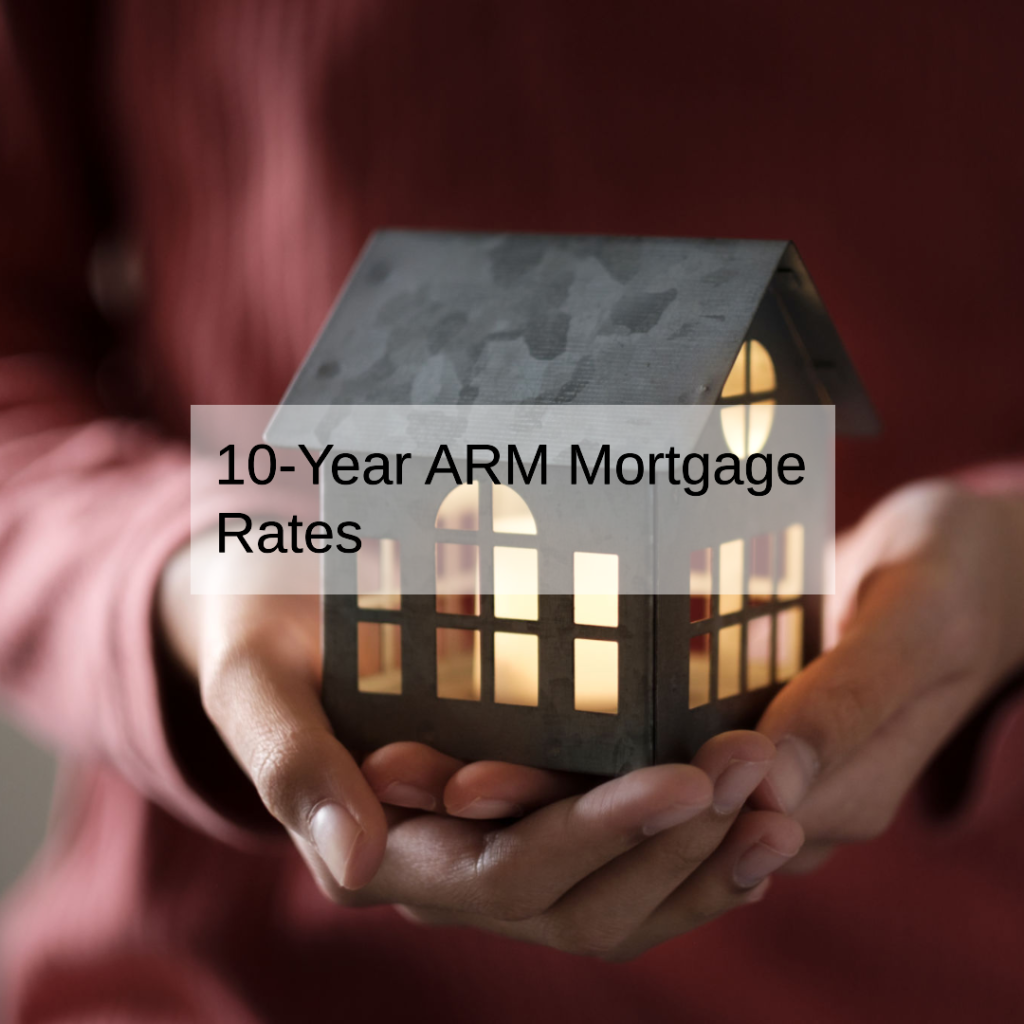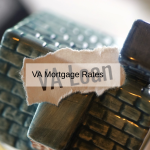A 10-year Adjustable Rate Mortgage (ARM) is a type of mortgage loan where the interest rate is fixed for the first ten years and then adjusts annually based on market conditions. This guide will provide a detailed overview of 10-year ARM mortgage rates, how they work, their advantages, risks, factors affecting rates, current trends, qualification requirements, and a comparison with other mortgage options.
What is a 10-Year ARM?
A 10-year ARM is a mortgage loanwith an initial fixed interest rate for the first ten years. After the initial fixed-rate period, the interest rate adjusts annually based on an index specified in the loan agreement.
How Does a 10-Year ARM Work?
During the initial fixed-rate period of 10 years, the borrower pays a fixed interest rate. After the initial period, the rate adjusts annually based on the index and margin specified in the loan agreement. The adjustment caps limit how much the rate can increase or decrease each year and over the life of the loan.
How to Refinance Your Current Mortgage
Navigate the refinancing process with confidence, from assessing your financial situation to choosing the right refinance option and lender.
Advantages of a 10-Year ARM
- Lower initial interest rates compared to fixed-rate mortgages loan, leading to lower initial monthly payments.
- Potential for savings, especially for borrowers who plan to sell or refinance before the rate adjusts.
Risks and Considerations
- The possibility of higher rates after the initial fixed-rate period, leading to higher monthly payments.
- The impact of rate fluctuations on monthly payments, which can increase or decrease based on market conditions.
Factors Affecting 10-Year ARM Rates
- Economic indicators such as inflation, economic growth, and the federal funds rate influence ARM rates.
- Lender-specific factors such as the lender's profit margin and competition in the mortgage loan lendersmarket can also impact ARM rates.
Current Trends in 10-Year ARM Rates
Recent trends show that 10-year ARM rates have been lower than fixed-rate mortgages, making them an attractive option for borrowers looking for lower initial payments. However, it's important to consider how rates may change in the future based on economic conditions.
Some of Best Mortgage Lenders in the USA
- Quicken Loans - Known for their excellent customer service and fast loan processing times.
- Wells Fargo - Offers a wide range of mortgage products and has a strong presence nationwide.
- Chase Bank - Provides competitive rates and a variety of loan options to suit different needs.
- Bank of America - Offers competitive rates and has a strong online presence for easy access to mortgage information.
- US Bank - Known for their personalized service and flexible loan options.
- Rocket Mortgage - Offers a completely online mortgage application process for convenience.
- Veterans United Home Loans - Specializes in VA loans and provides exceptional service to veterans and active-duty service members.
- CitiMortgage - Offers competitive rates and a variety of loan options for homebuyers.
- SunTrust - Known for their flexible loan terms and excellent customer service.
- Freedom Mortgage - Offers a variety of loan options and specializes in helping first-time homebuyers.
- PennyMac - Known for their competitive rates and efficient loan processing.
- Guild Mortgage - Offers personalized service and a wide range of loan options for homebuyers.
How to Qualify for a 10-Year ARM
To qualify for a 10-year ARM, borrowers typically need a good credit score, stable income, and a low debt-to-income ratio. Lenders will also consider the loan-to-value ratio and the property's appraised value.
How to Get the Best Mortgage Rate
Unlock insider tips and strategies to secure the best mortgage rate, from improving your credit score to shopping around and negotiating with lenders.
Comparing 10-Year ARM Rates with Other Mortgage Options
When comparing 10-year ARM rates with other mortgage options, borrowers should consider factors such as the length of time they plan to stay in the home, their risk tolerance, and their financial goals.
Compare Mortgage Lenders Side by Side
Learn how to effectively compare mortgage lenders, weighing factors such as rates, fees, customer service, and reputation to find your ideal partner.
Factors That Determine Your Mortgage Rate
Gain insights into the various factors that influence your mortgage rate, including creditworthiness, loan amount, down payment, and market conditions.
10-year ARM mortgage loan ratesoffer borrowers the opportunity for lower initial payments and potential savings. However, it's essential to understand the risks and considerations involved, as well as how rates may change over time. Borrowers should carefully weigh their options and consult with a qualified lender to determine if a 10-year ARM is the right choice for their financial situation.
FAQs
Q: What is the difference between a 10-year ARM and a 30-year fixed-rate mortgage?
A 10-year ARM has an initial fixed-rate period of 10 years, after which the rate adjusts annually based on market conditions. In contrast, a 30-year fixed-rate mortgage has a fixed interest rate for the entire 30-year term, providing stable monthly payments.
Q: Can I refinance my 10-year ARM to a fixed-rate mortgage?
Yes, borrowers can refinance their 10-year ARM to a fixed-rate mortgage. However, it's important to consider the costs and benefits of refinancing, including any prepayment penalties or fees.
Q: How often does the interest rate on a 10-year ARM adjust?
The interest rate on a 10-year ARM adjusts annually after the initial fixed-rate period. The adjustment is based on the index specified in the loan agreement and is subject to caps that limit how much the rate can increase or decrease each year.
Q: What happens if I cannot afford the higher monthly payments when my 10-year ARM adjusts?
If you cannot afford the higher monthly payments when your 10-year ARM adjusts, you may face financial difficulties. It's essential to plan ahead and consider your financial situation before choosing a 10-year ARM. Options such as refinancing or selling the home may be available but may come with costs and risks.
Q: Are there any advantages to choosing a 10-year ARM over a fixed-rate mortgage?
One advantage of a 10-year ARM is the lower initial interest rate, which can result in lower initial monthly payments compared to a fixed-rate mortgage. This can be beneficial for borrowers who plan to sell or refinance before the rate adjusts.
Q: What are the risks of a 10-year ARM?
The main risk of a 10-year ARM is the potential for higher interest rates after the initial fixed-rate period. This can lead to higher monthly payments and financial strain if rates rise significantly. Borrowers should consider their ability to afford higher payments in the future when choosing a 10-year ARM.
Q: How do economic indicators impact 10-year ARM rates?
Economic indicators such as inflation, economic growth, and the federal funds rate can influence 10-year ARM rates. For example, if the economy is growing and inflation is rising, lenders may increase ARM rates to offset the higher cost of borrowing.
Q: What documentation is needed to apply for a 10-year ARM?
To apply for a 10-year ARM, borrowers typically need to provide documentation such as proof of income, employment verification, tax returns, and information about their assets and liabilities. Lenders may also require a credit report and appraisal of the property.
Q: Can I pay off my 10-year ARM early?
Yes, borrowers can pay off their 10-year ARM early without penalty in most cases. However, it's important to check the terms of the loan agreement to understand any prepayment penalties or fees that may apply.
Q: Is a 10-year ARM a good option for first-time homebuyers?
A 10-year ARM can be a good option for first-time homebuyers who plan to sell or refinance before the rate adjusts. However, it's important for first-time homebuyers to carefully consider their financial situation and future plans before choosing a 10-year ARM.














